Billnäs ironworks is now 380 years old – the beautiful village is a great destination for a summer trip
In commercial partnership with Visit Raseborg
Billnäs is a significant part of Finland’s industrial history. The beautiful ironworks milieu may still be experiencing a moment of peace from a bigger tourist rush, but the village is coming to life thanks to the hard work of the ironworks’ new owner. In 2019, we cycled over the old Ratavalli train tracks, now open to the public, from Fiskars to Billnäs and enjoyed both the stunning Mustionjoki scenery and the impressive history of the ironworks.
Route length: 20km
Riding time around 2h
Starting point and end point on the map
Easy route, some hills
One beautiful day in the early summer, we found ourselves unloading our slightly too tightly-packed bicycles from the trunk of our car on the outskirts of the village of Fiskars. We’d spent the previous day gathering our strength on the endless beaches of Hanko, and our minds, thirsting for action, were already racing through our route for the day.
For our home base, we chose Fiskars, from where we would cycle towards Billnäs on the Ratavalli, which was opened in 2019 as a footpath. The Ratavalli, named after the old train track base it runs on, starts at the Karjaa sports park and ends in Fiskars, and it’s an excellent route for travelers wanting to cycle. The trip can also be made without a car if you start in Karjaa, as you can bring your bike there by train from Helsinki.
The fields and farms are criss-crossed by numerous roads, mainly gravel, so you can pick your own path with relative freedom. The plan was to take a slightly different route back from Billnäs to Fiskars.
Taking the Ratavalli to Billnäs
You can find the Ratavalli route on Google Maps under the name Skuruntie, departing from the Fiskarsintie road that approaches Fiskars from the south, on the south side of the village center. We travel the first few kilometers around the shore of lake Borgbyträsket, which belongs to the drainage basin of Fiskarsinjoki river. Leaving the happy cows behind, we push onward on the peaceful gravel road on the first bike trip of the summer. We stop next to a wall of rock on the south side of the lake when my spouse shouts at me from behind. I only see a gray blur of the snake slithering by my feet. The viper slips away quickly in search of a calmer place to warm its poikilothermous body.
We roll on southward on the tracks, passing the Tallbacka village, until we cross the Turuntie road. Our initial plan was to cycle through Åminnefors village, but we realize around the bridge crossing Mustionjoki river that the Ratavalli passes Åminnefors on the north. If we wanted to stop at the only ironworks still in industrial use, we should have left the Ratavalli route and continued along Mustionjoki river towards the village center. Oh well, there’s always next time. We continue on our way towards Billnäs, where we have a date with guide Matti Piirainen, based in Tammisaari.
We arrive in the center of Billnäs and leave our bikes on the old railyard, bordered by the old dispatch center under repairs. This building was used for dispatching the ironworks’ products all around Finland and the world. Soon we are approached by the guide, Matti, who will guide us through the history of the area.
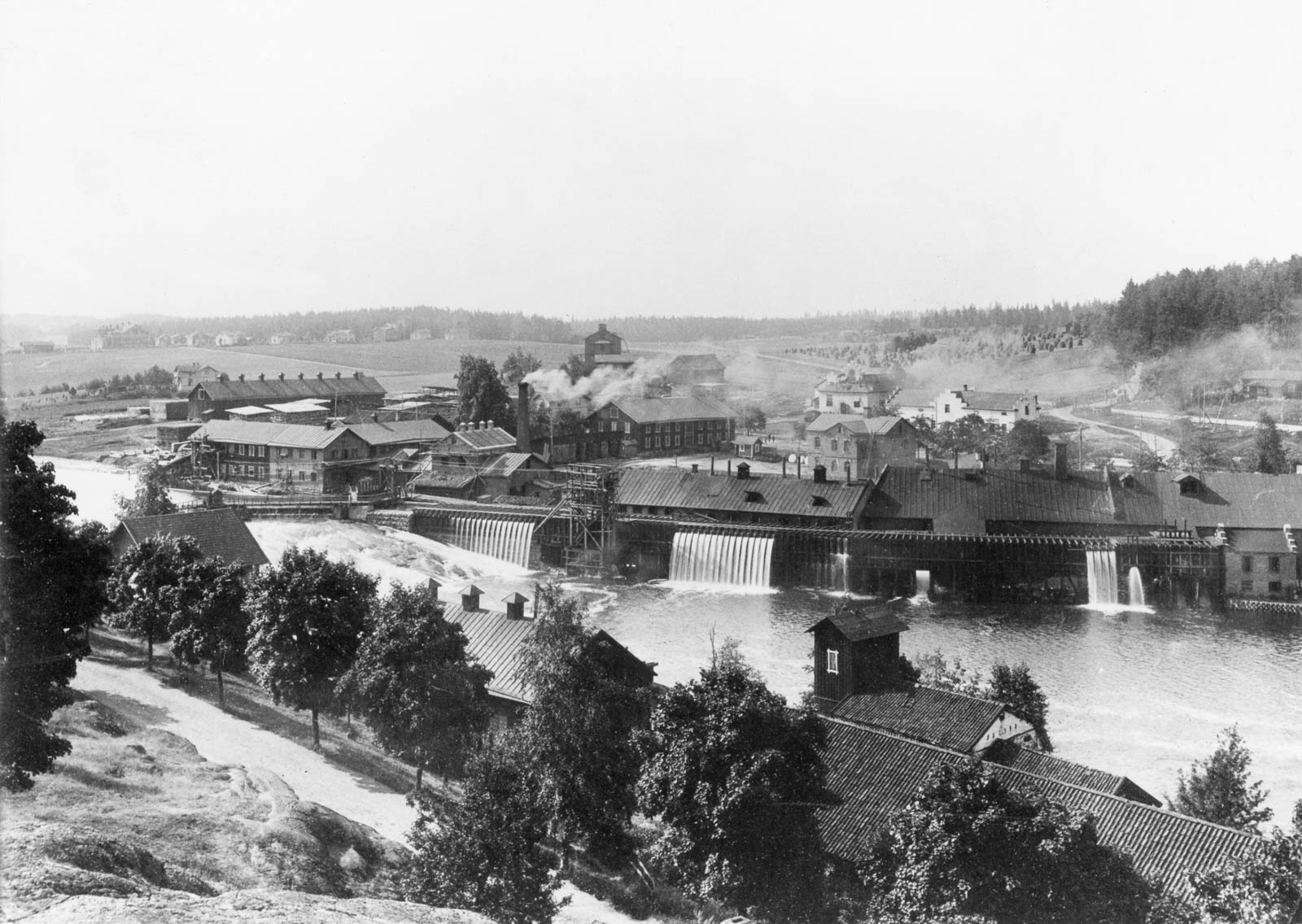
History of the Pohja ironworks 101
The Pohja ironworks were first formed in the early 17th century, and are as a whole part of Finland’s national landscape, a collection of 27 sites that proudly represent the country’s culture, history and nature. The ironworks are a significant part of Finland’s tradition of industrial history.
There are altogether five old ironworks in Länsi-Uusimaa: The Pohja ironworks, consisting of Antskog, Fiskars and Billnäs, as well as Mustio and Fagervik. They’re all located within 30 kilometers of each other and all have differing natures and histories. Antskog is very quiet and less of a tourist attraction, Fiskars is a village of artisans, and Mustio is the oldest of the ironworks, characterized by Mustio castle and the large manor park. Fagervik in Inkoo is noted by the Finnish Heritage Agency as “the most complete and representative ironworks of the pre-industrial era”, and it, too, is well within reach of a cyclist looking to visit the Länsi-Uusimaa ironworks.
The Billnäs ironworks was founded in 1641 under Swedish rule. Sweden’s own ironworks had shaved down the forests surrounding them, so the decision was made to build new ironworks in Uusimaa, known in Swedish as Nyland. The location of the ironworks was based on three key needs: a harbor for the logistics chain, a river to power the ironworks, and forest as a source of charcoal to burn. Billnäs manufactured various tools, from nails to ax heads, later moving on to office furniture – which is where many Finns know the name from today.
We start our walking tour from the gate of the ironworks. Attention is quickly drawn to the initials and dates on the ends of the houses. The wrought iron initials signify the period each building is from.
Billnäs was founded in 1641 by former customs officer Carl Billsten, who later passed on the title of ironworks tycoon to his son. During the Isoviha period of the Great Northern War, the ironworks was destroyed almost completely, after which the company was purchased by the Hising brothers. The Hisinger family ruled over the ironworks for a few hundred years, until they were acquired by Fiskars in the 1920s. Understandably, the buildings mostly carry the Hisinger initials.
We walk by the store of a tourism entrepreneur, sporting new, shiny city bikes at the front. In addition to Billnäs, there are bicycle rentals in Karjaa, Fiskars and Tammisaari. Thanks to this, you can cycle between the ironworks without much pre-planning or acquiring a bike beforehand. The entrepreneur also operates a workshop and a flea market in the same space, which will be neighbored by a canoe and bike rental in the future.
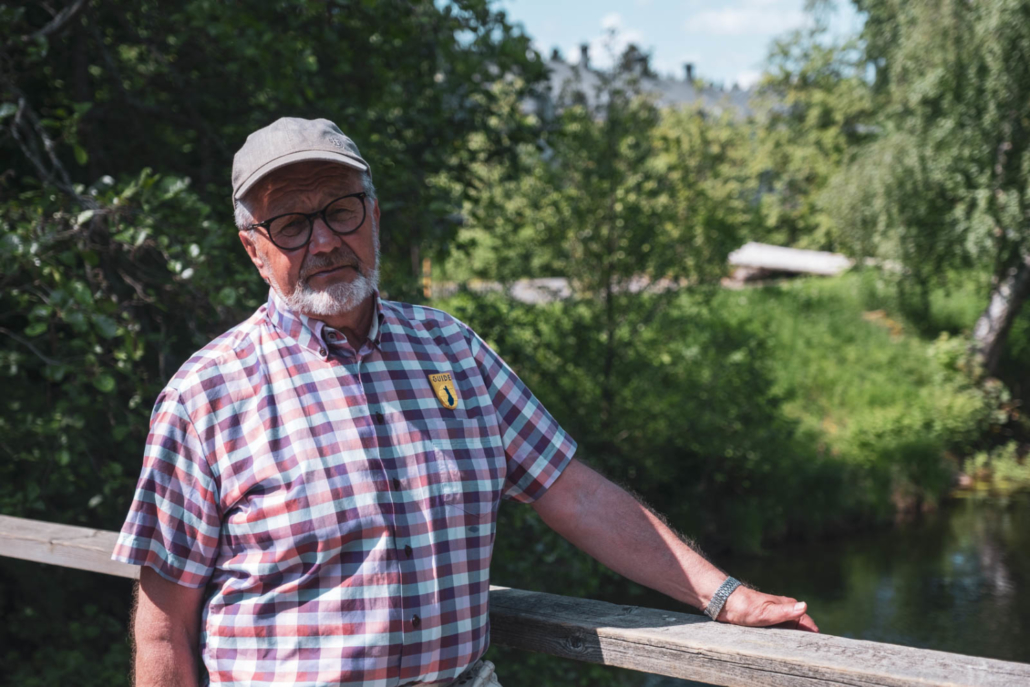
Matti Piirainen arranges boat trips in the Tammisaari archipelago national park and works as a guide in both the nature of Tammisaari and historic environments like the Fiskars and Billnäs ironworks. Matti has completed the Suomen Latu wilderness guide course. He has guided wilderness trips in Utsjoki, Lapland, and since expanded his repertoire. He started the boat tours about 10 years ago, and he has a rental boat driver’s license. Learn more on Matti’s website.
We continue walking towards the banks of the Mustionjoki river. A thrush nightingale is singing on the branch of a deciduous tree and the bright June light is casting sharp shadows all around us. Soon we’re standing on a wooden bridge over Mustionjoki on the east side of the dam.
Mustionjoki river is also suited for canoeing and kayaking. Right on the south side of the Peltokoski power plant, by the side of the Salontie road, is a boat launching place. There are no dams on the way, and aside from one small rapid, you can boat down the river for around 20 kilometers all the way to Billnäs. You can take your canoe out of the river before the Billnäs dam. As for renting, you can find rentals such as Melontatehdas, known in Swedish as Paddlingsfabriken, in the area.
Before the hydroelectric dam, a new pontoon bridge takes us to the newly-built fish ladder. We’ll hear more about them later from the ironworks’ current owner, Olli Muurainen. The ironworks creates an impressive view from the north side of the river, the factory chimney standing out against a nearly cloudless sky. We pass by the oldest houses in the village, smith’s residences from the 18th century painted in red ochre. The workers lived in these wooden houses painted with red earth pigment, charming from a modern viewpoint. Clerks lived in slightly larger stone houses.
The ironworks’ development
The ownership of the key buildings was transferred from Fiskars to the municipality of Pohja in the 1980s. In 2008, the municipality sold them to entrepreneur Olli Muurainen, who’s been renovating the area since. We meet Olli on the terrace of the soon-to-open summer restaurant, on the bank of Mustionjoki river. He tells us about the toil it’s taken to renovate the ironworks.
Now, after a gap of 10 years, the ironworks is open to individual customers once more. A hotel has been built in the ironworks’ old head office, offering 22 tastefully decorated rooms, some of which are located in the neighboring former design office. The ironworks also offers an unparalleled setting for meetings, events and celebrations such as weddings. As a pandemic specialty, the ironworks has offered remote work packages.
In addition to the current restaurant serving hotel guests and conference-goers, an outdoor summer restaurant will be opened this year and in the future, there will be shops in the old dispatch center, which is currently under renovations. Throughout July, there’s a Sunday market in the area.
The renovation of the protected buildings has been going on for years, and the work is now roughly at its halfway point. The forested area has been cleared heavily to better match the original landscape. 300 cherry trees have been planted in the area along with North-American maples and oaks, which are expected to sport stunning fall colors. The ironworks is celebrating its 380th anniversary in 2021, and the celebrations will be surrounded by gorgeous colors in both the summer and the fall.
Last year, fish ladders were opened as a bypass for the Billnäs and Åminnefors hydroelectric dams. Billnäs has a so-called vertical slot fish ladder, where fish swim from rung to rung and can rest in the pools along the way. The fishways are opened around May Day and closed in November, following the annual cycle of migratory fish. The brand new pontoon bridge along the opposite bank leads to a viewing spot for the fish climbing their ladder. Later, the bridge will allow for passage over Mustionjoki river.
Back to Fiskars
Now it’s time to return to Fiskars. Leaving the red-brick chimney behind, we continue northwest on our bikes, through the Billnäs tree nursery and past the gorgeous Billnäs ironworks manor designed by Lars Sonck. We ride along the Turuntie road for a while before turning back onto smaller roads at the Påminne skiing center.
Following the Lillforsintie, we make our way to the Brunkom waterfront road, which we follow for a few kilometers to the Brunkomintie road. We cycle along the edge of a field for a while, until we get to the Gästerbyntie intersection, surrounded by forest. After that it’s a straight shot to Fiskars along the Gästerbyntie road, sand billowing behind our bikes. We ride fast into the village downhill, stopping conveniently in front of Cafe Pesula. Leaving our bikes to lean against each other, we enjoy some well-deserved apple soda on the sunny yard.
On this hot summer day, the impressive history of the ironworks feels both distant and tangible at the same time. The structural change facing the ironworks has pushed them to reinvent themselves. Fortunately, their locations are beautiful without exception, and the charming ironworks milieus are an inviting destination for travelers. They’re anything but historical curiosities.
Text and photos: Mika Puskala
Learn more
An impressive cycling route in Raseborg: Presenting the 46-kilometre long Front Line Route
The Antskog Ironworks in Raasepori – a historical idyll by the river

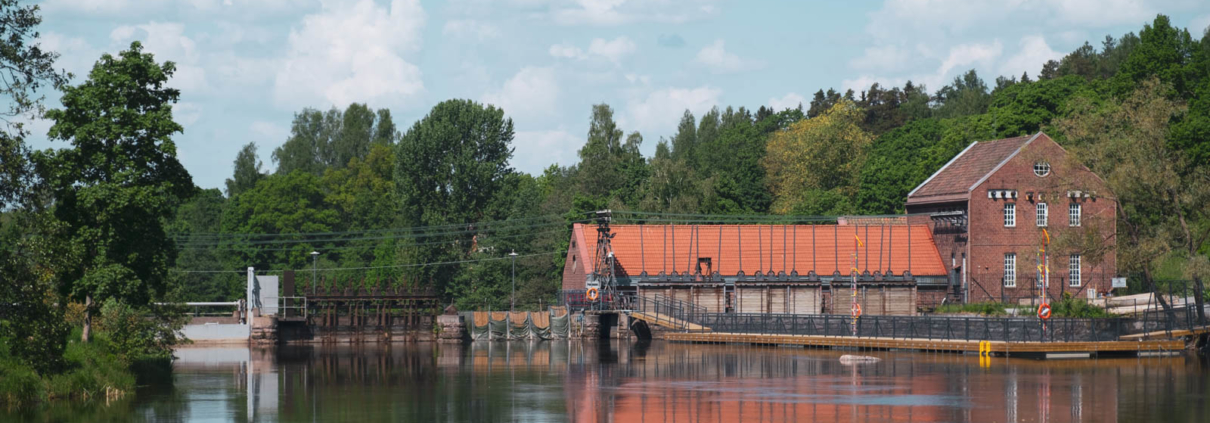

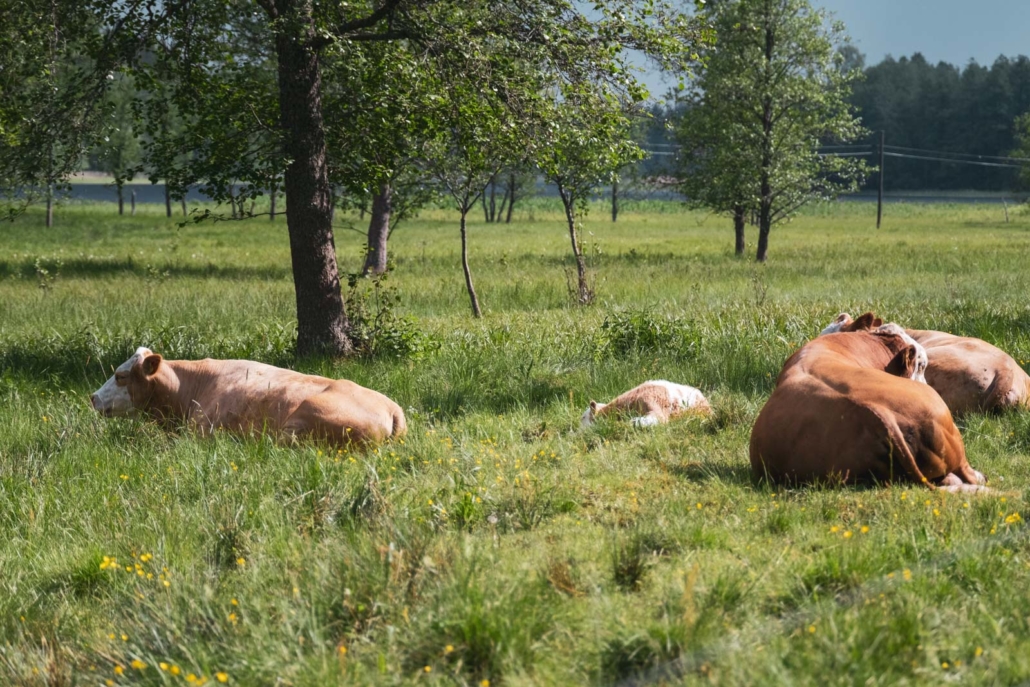
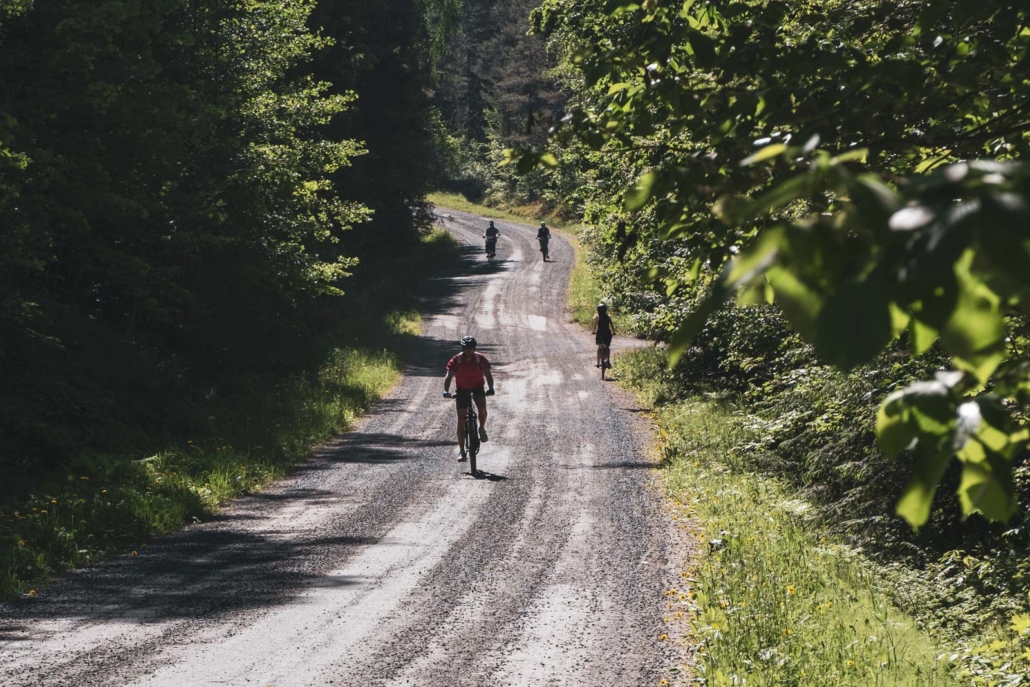

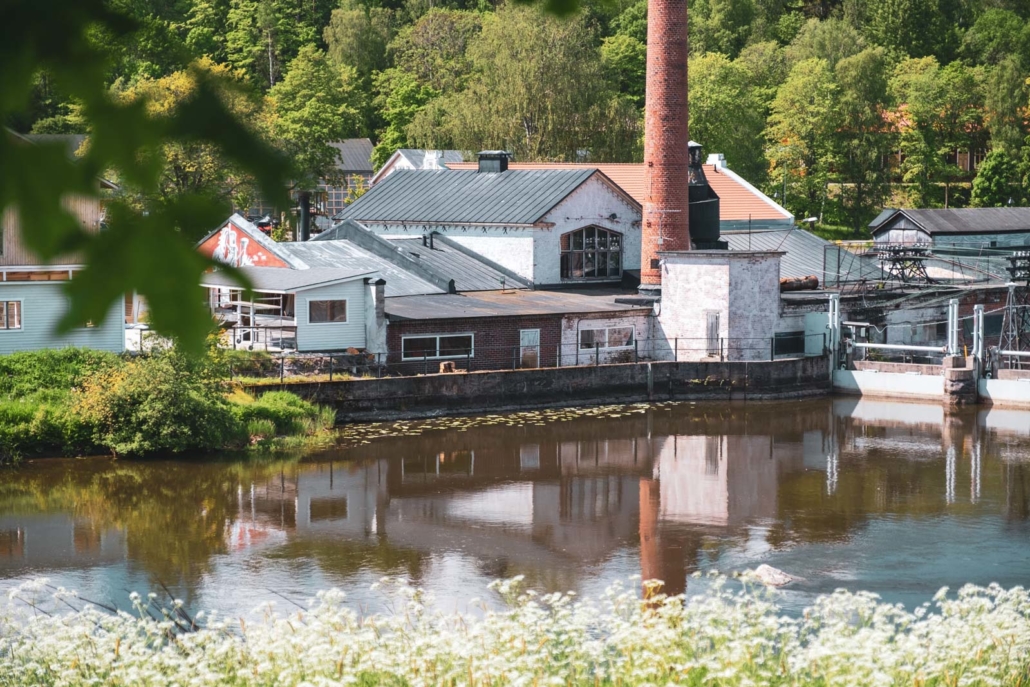
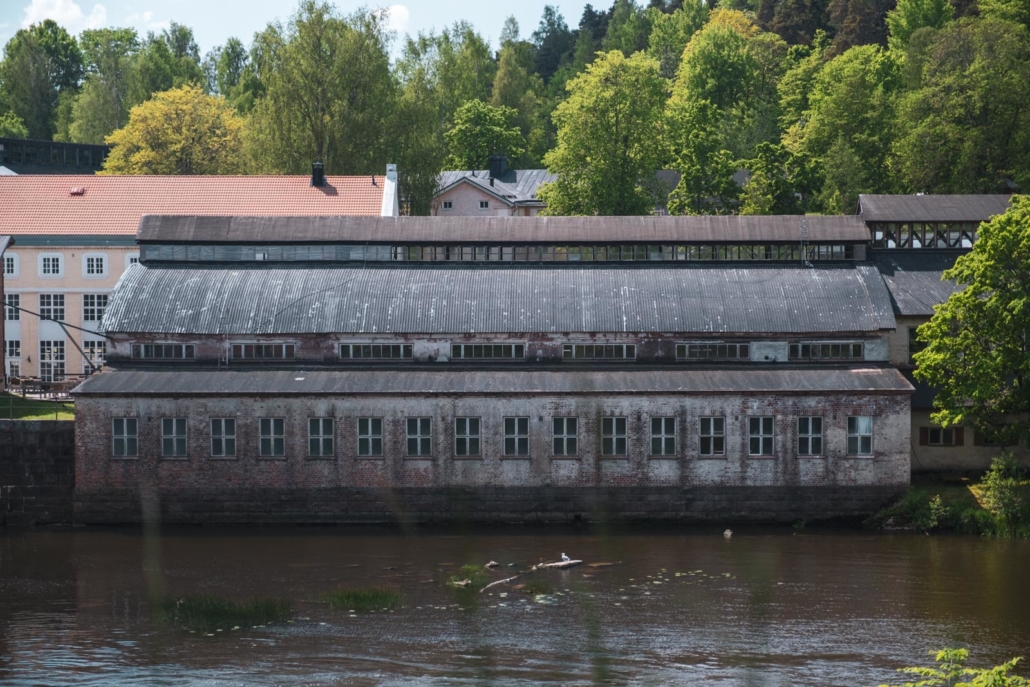
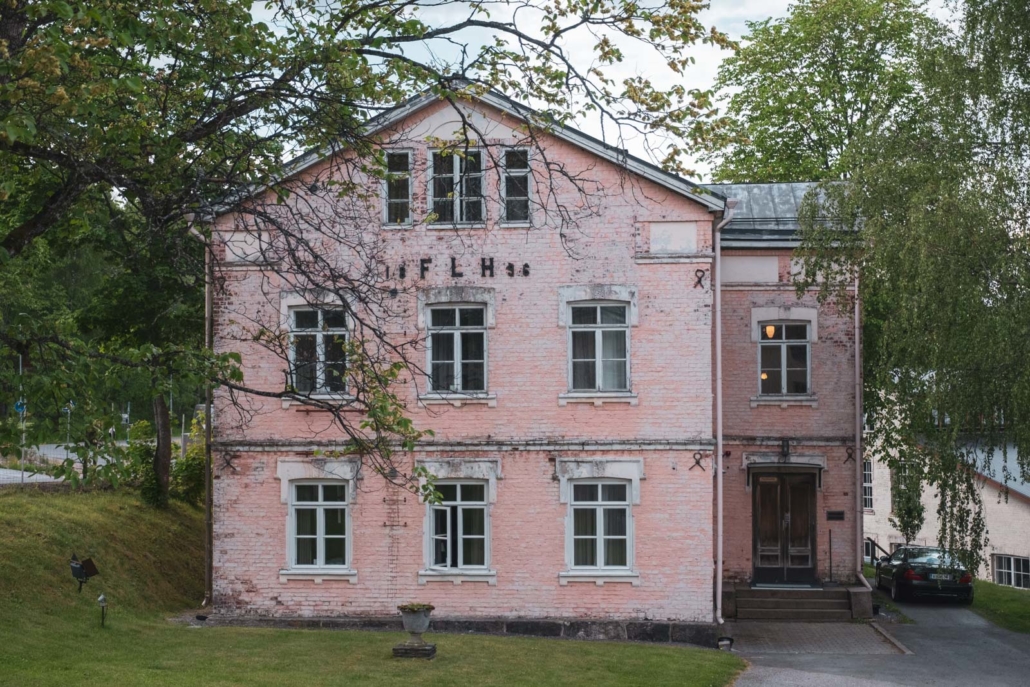


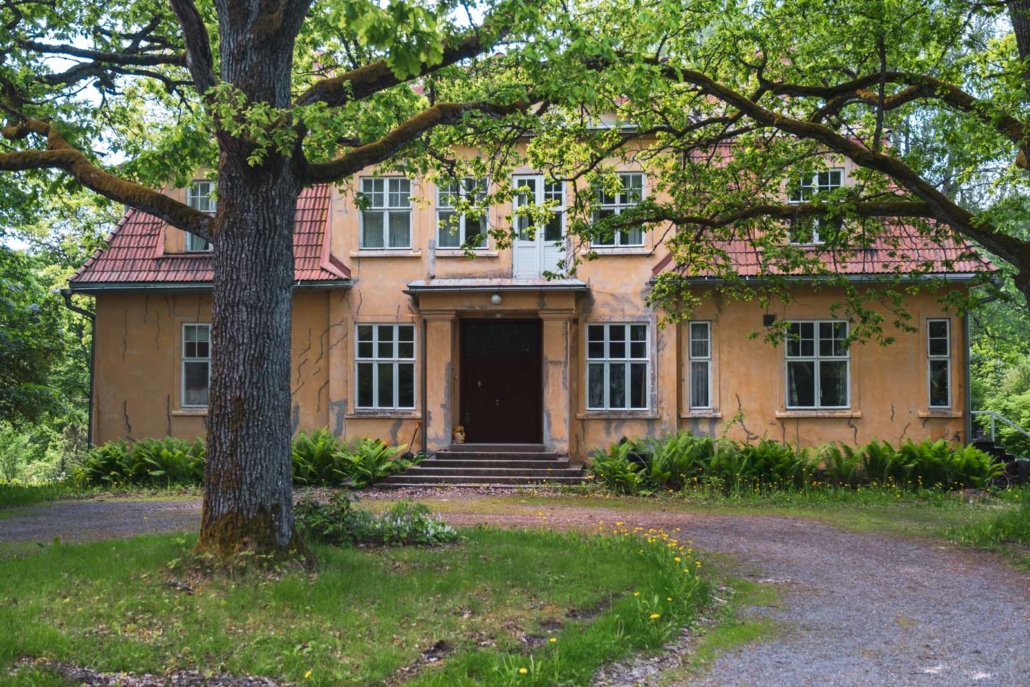

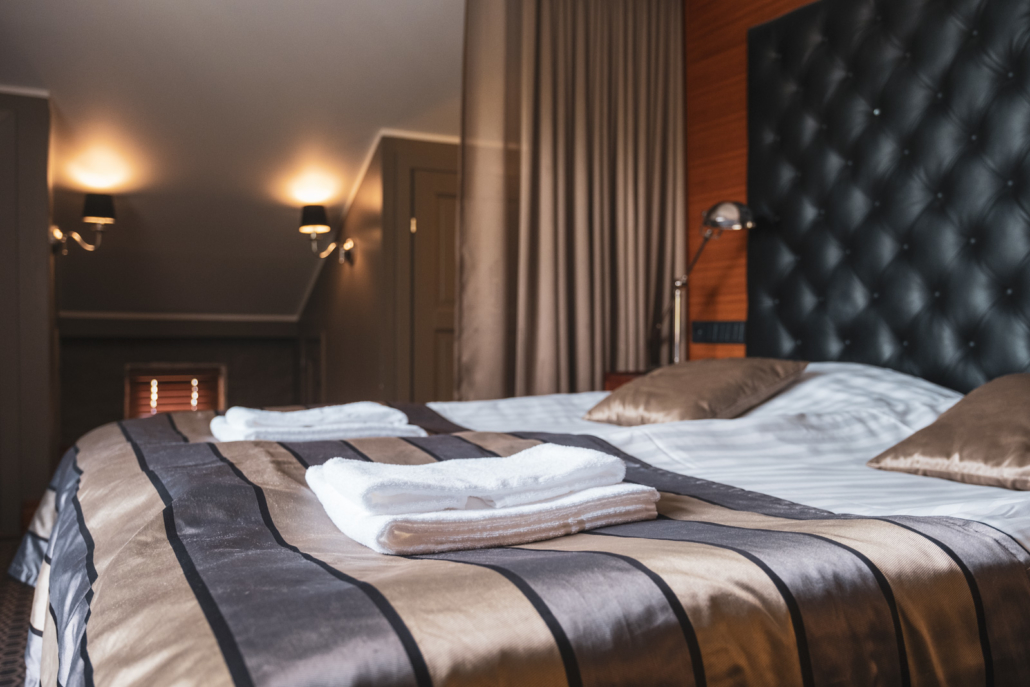
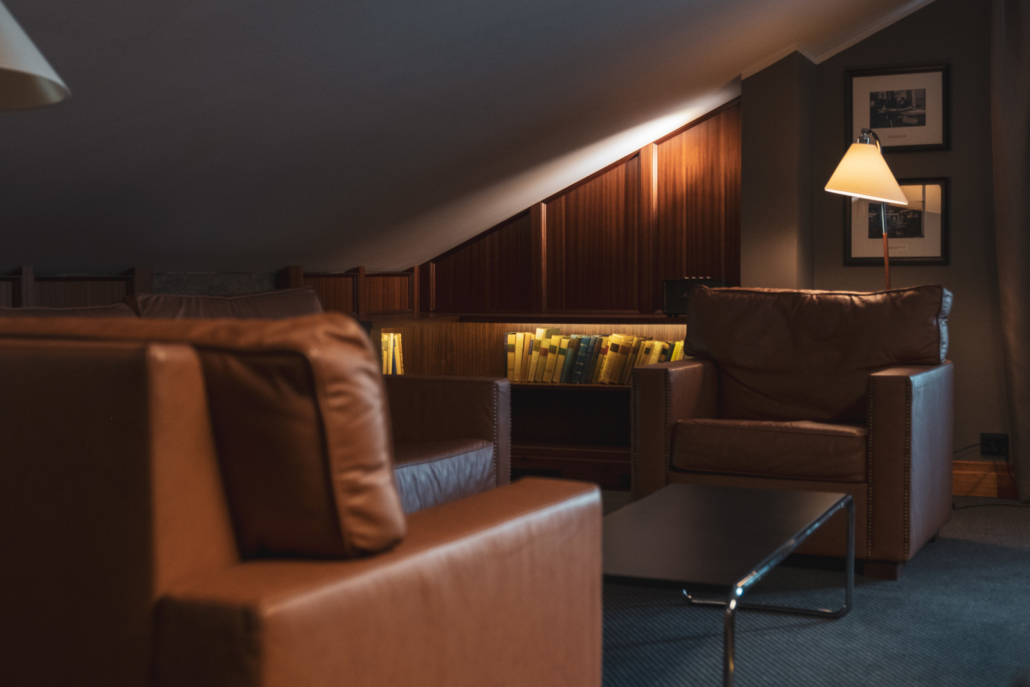
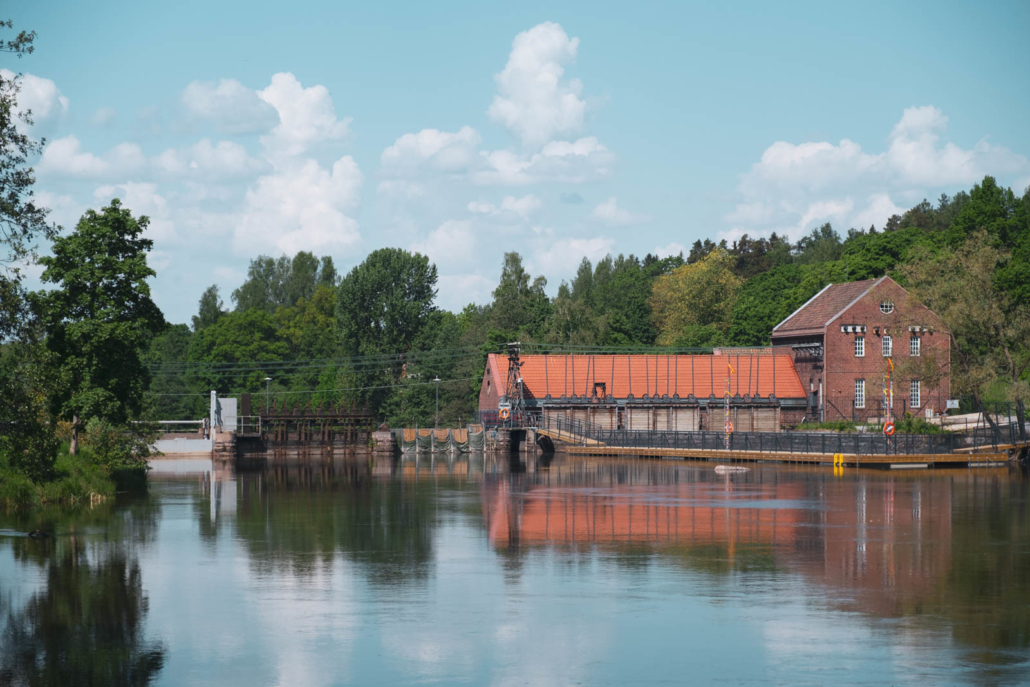
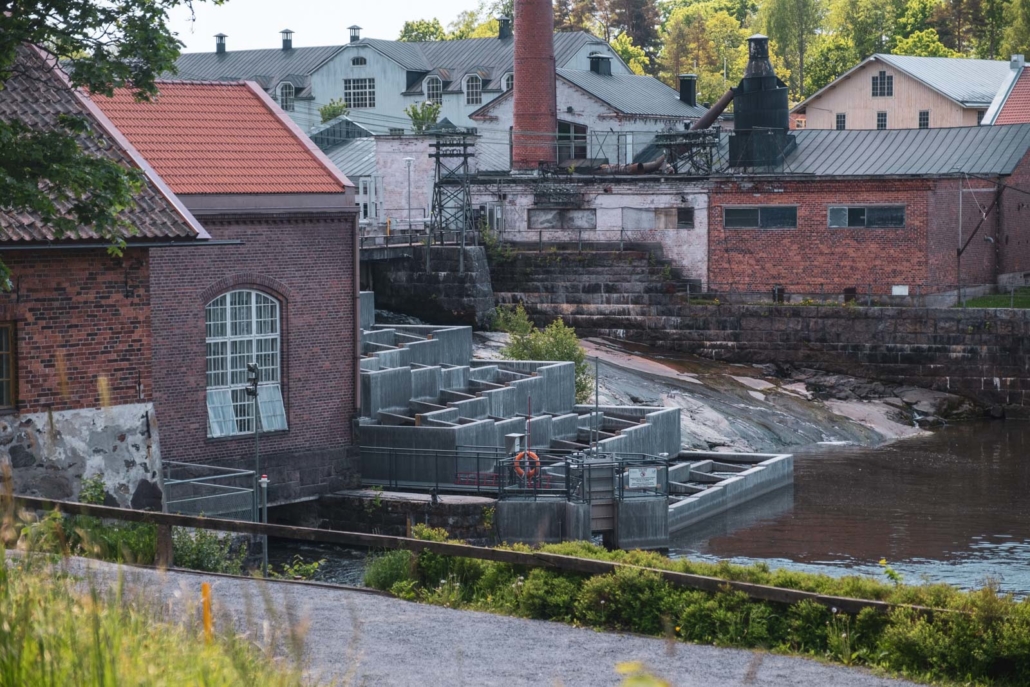

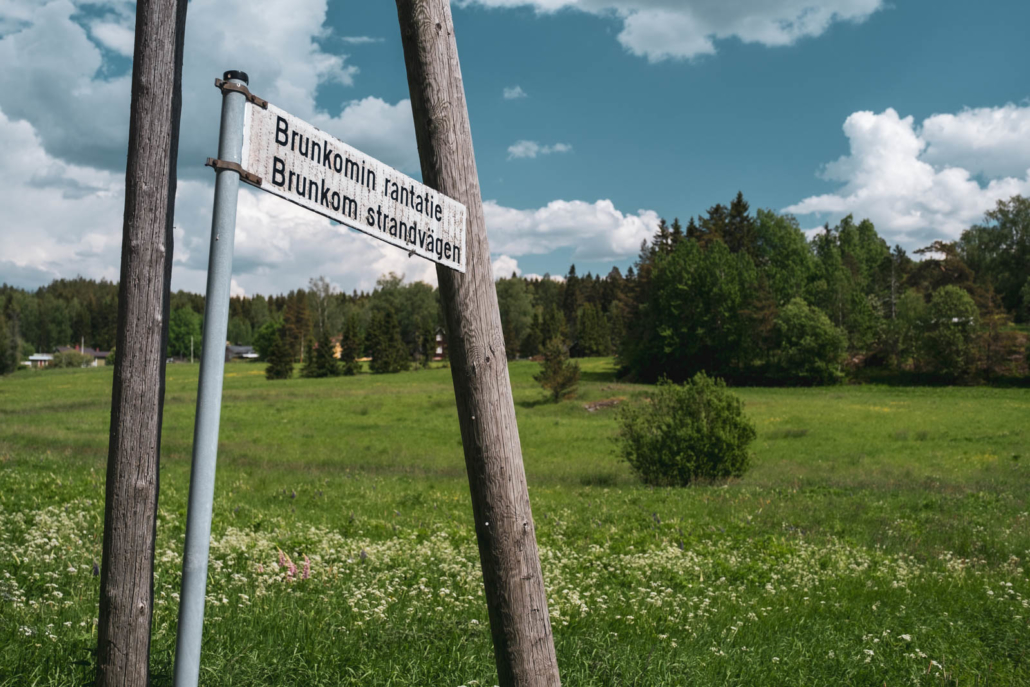
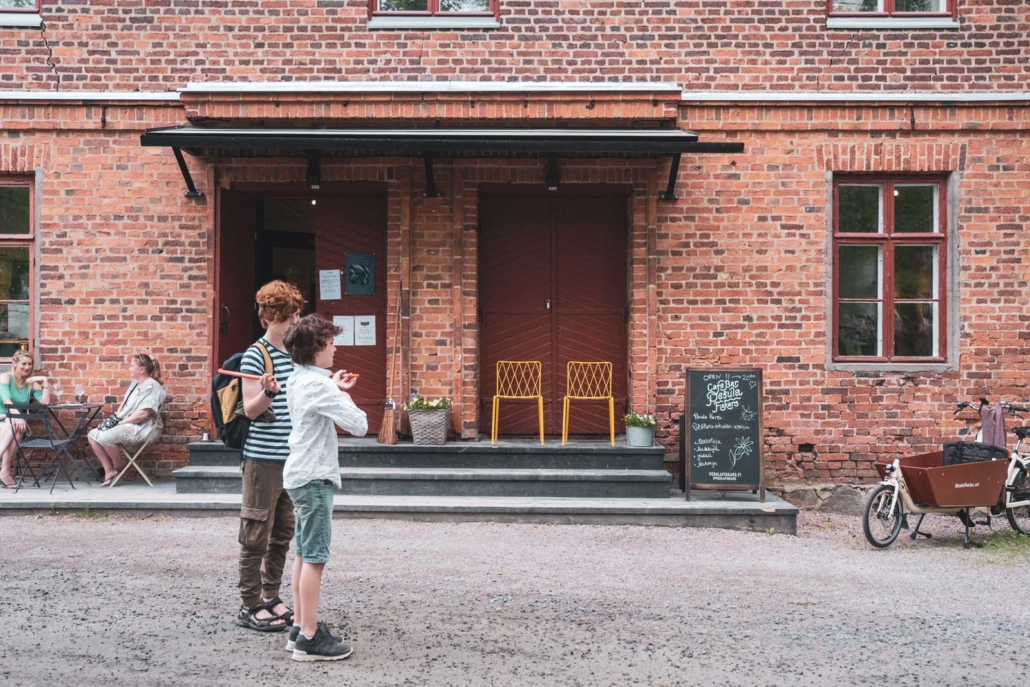



Leave a Reply
Want to join the discussion?Feel free to contribute!